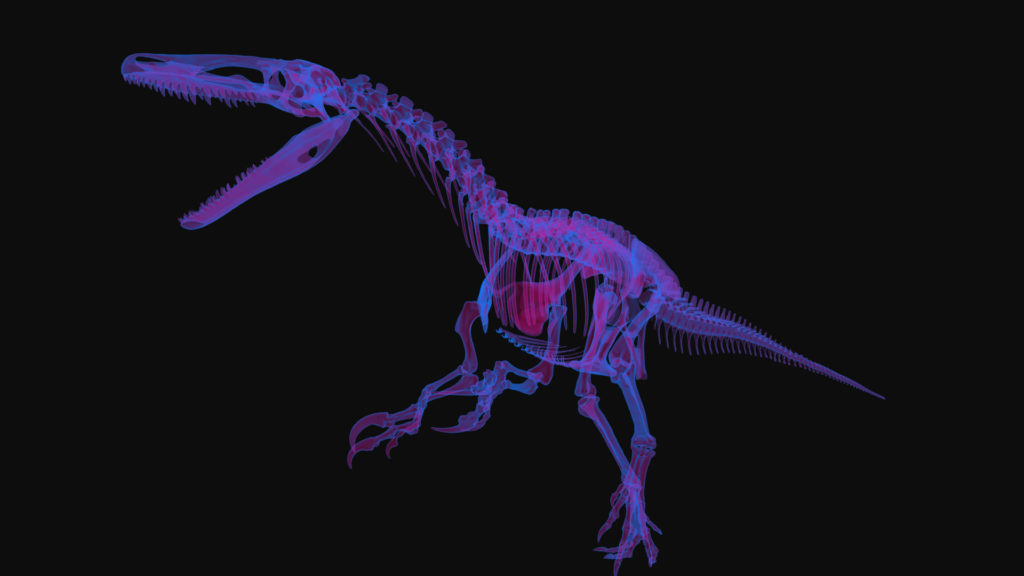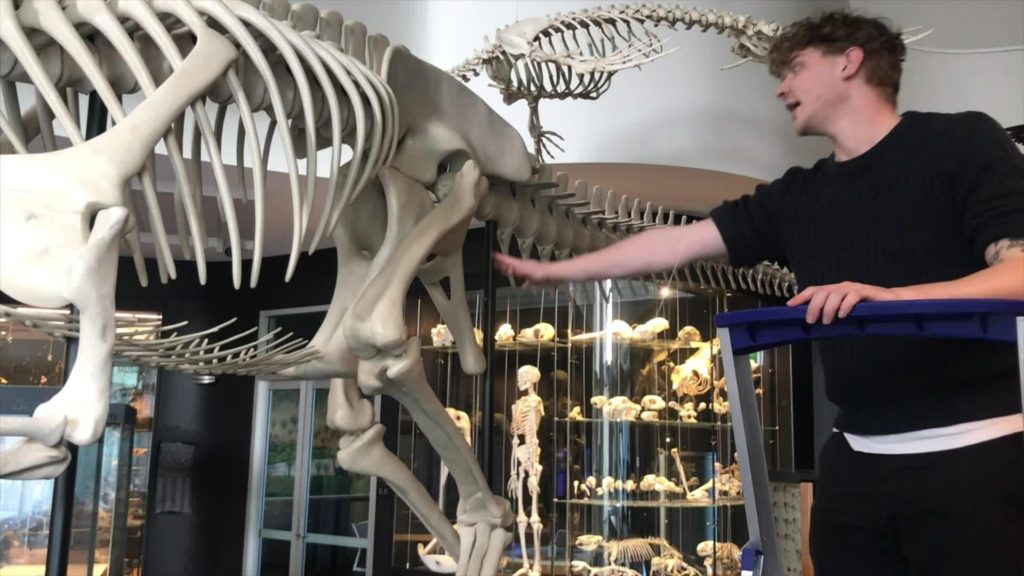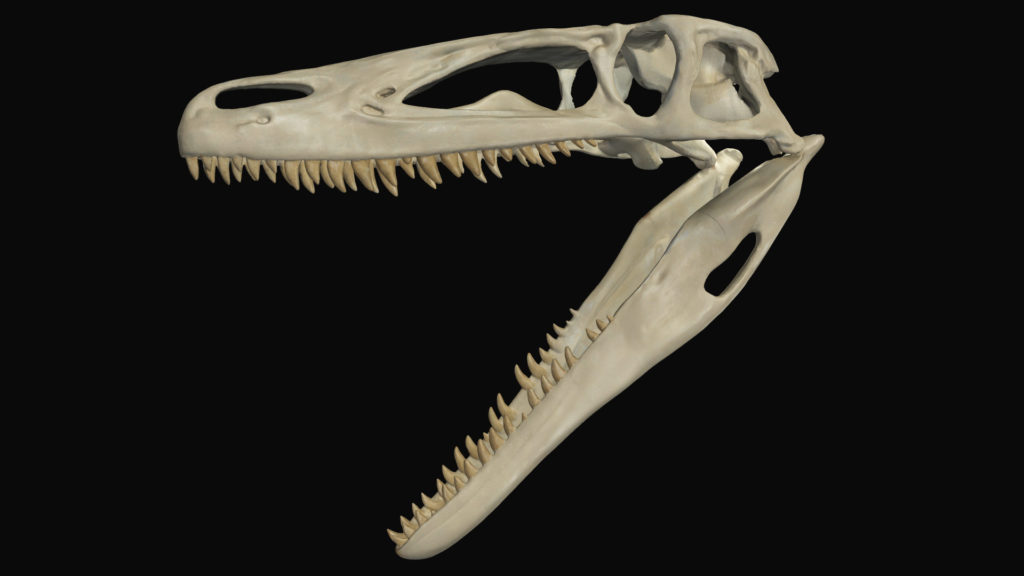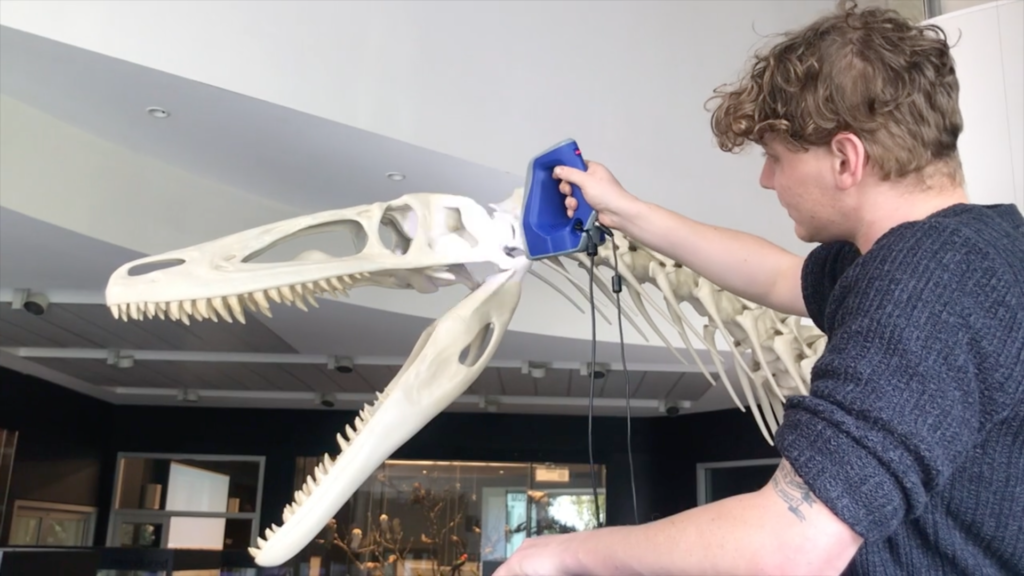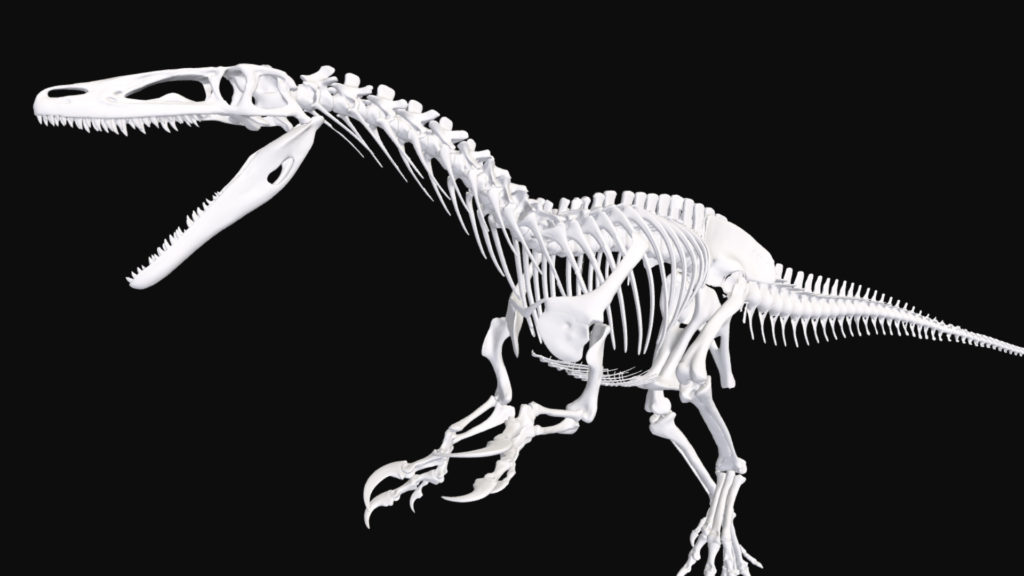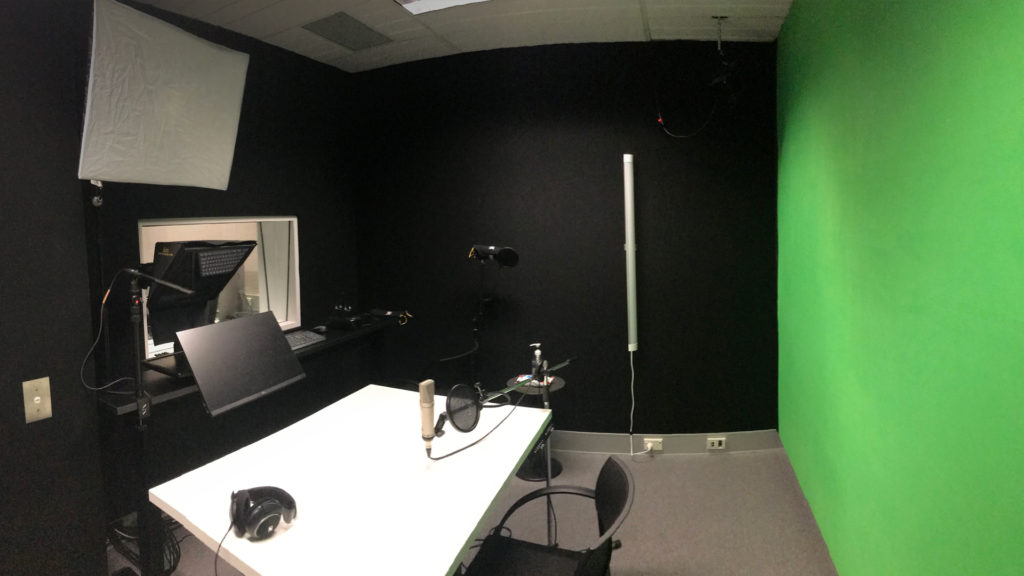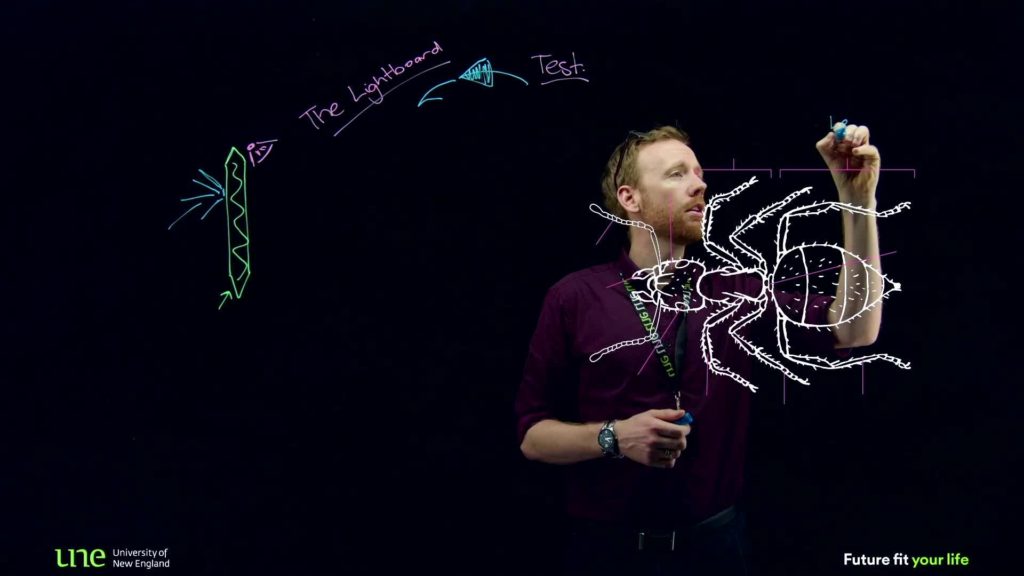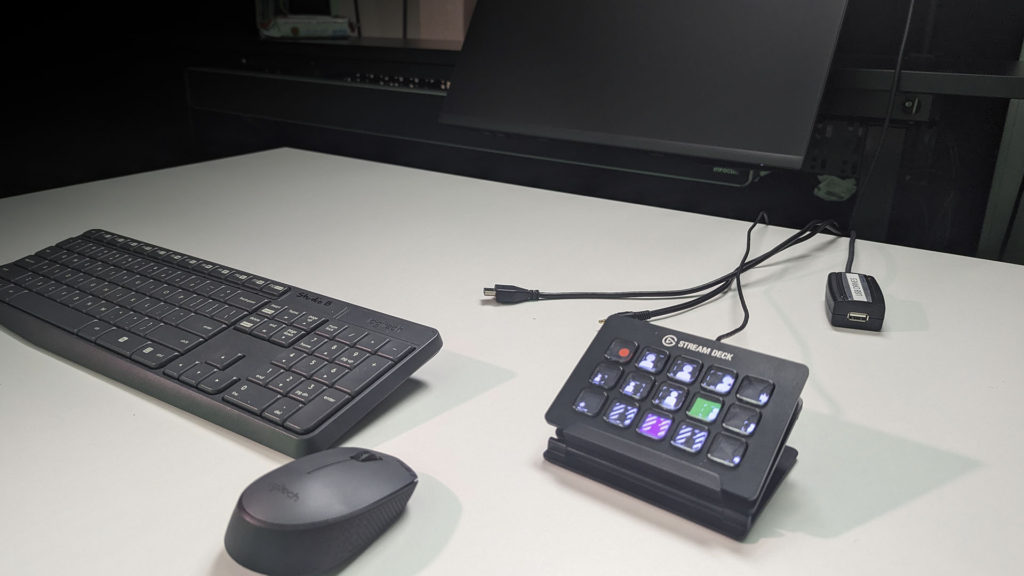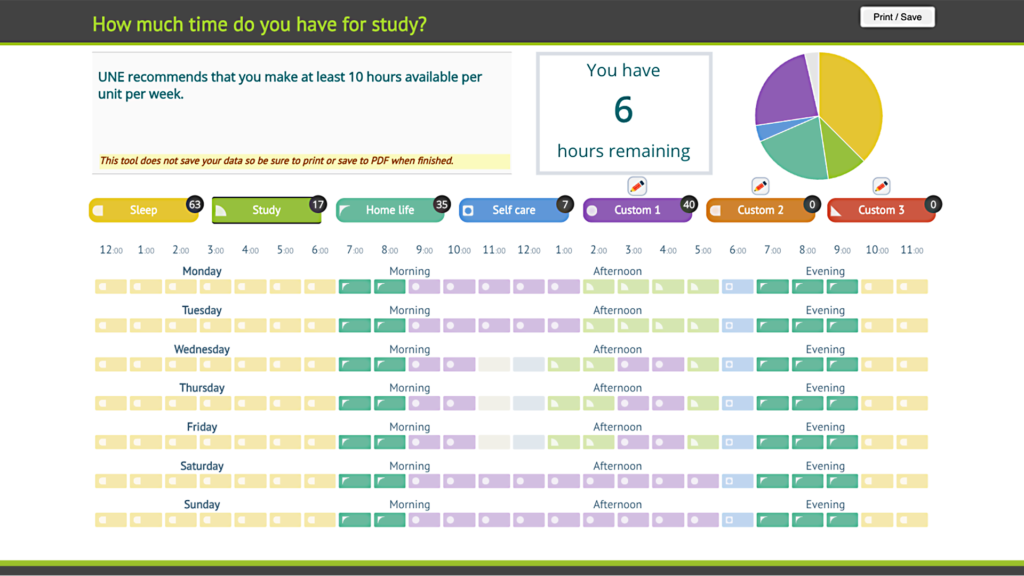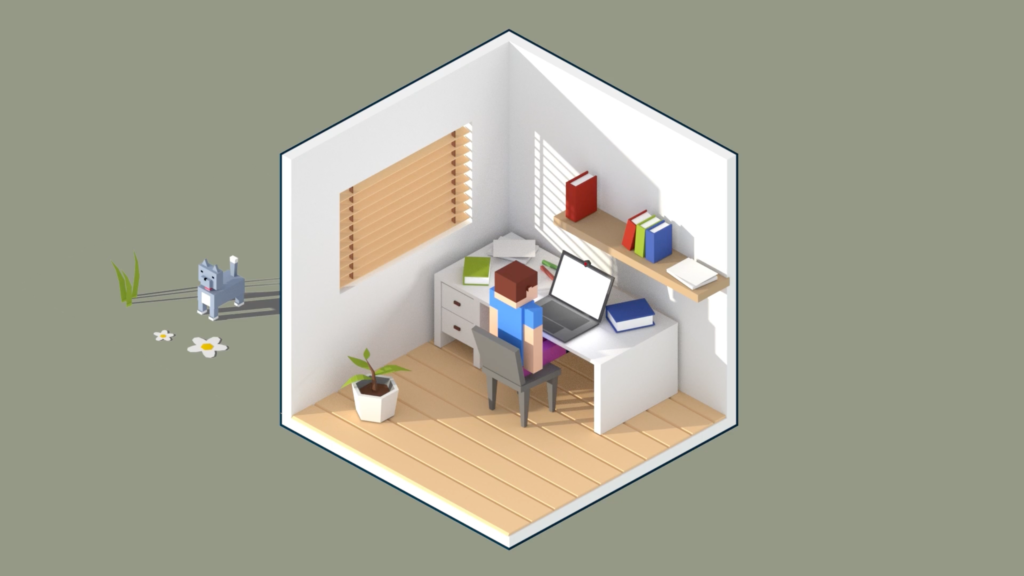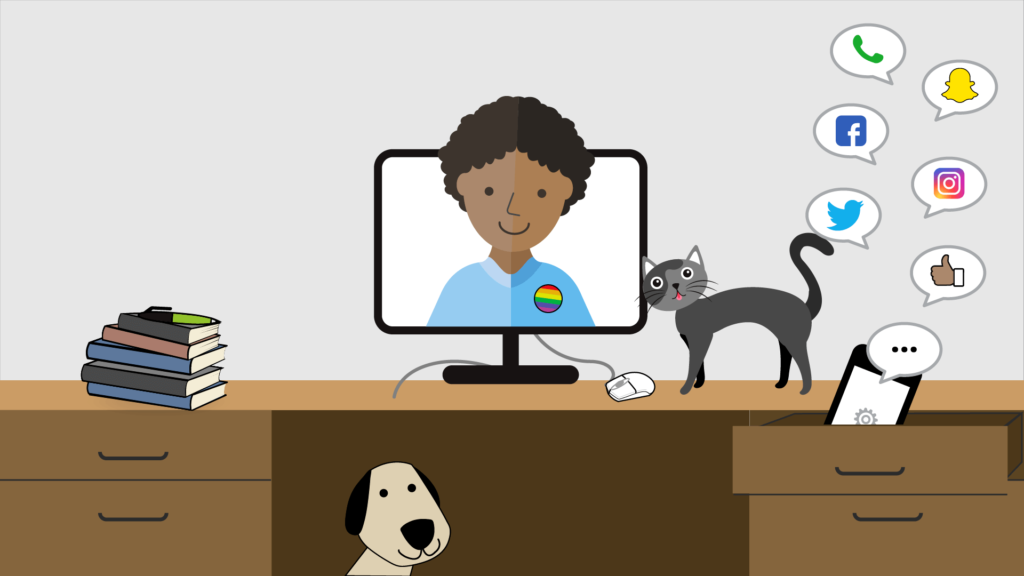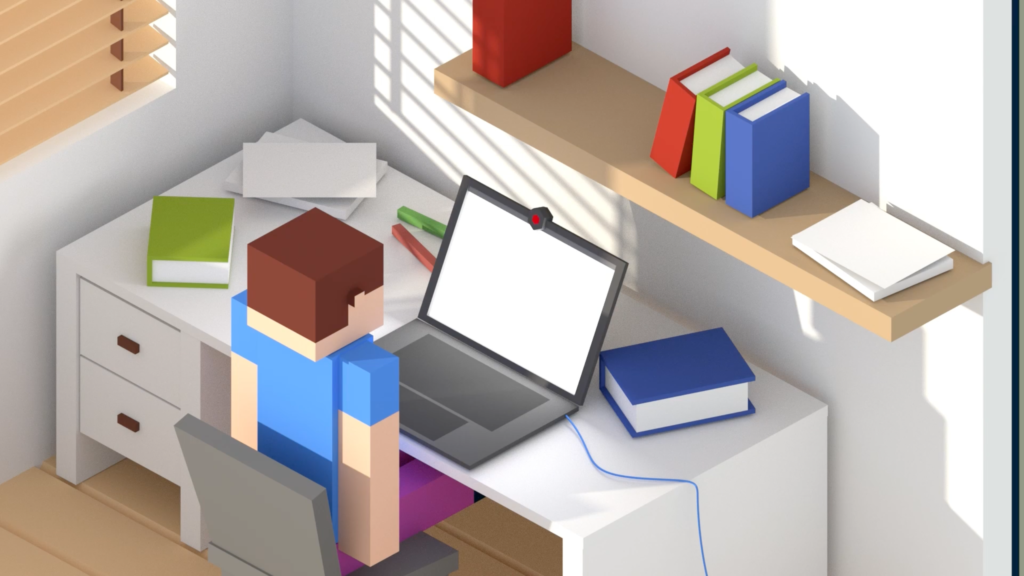Lightning Claw Dinosaur!
About
the project
The Lightning Claw scanning project was a great opportunity for us to see what new possibilities lay before us with a newly acquired Artec Space Spider Scanner. There were several benefits:
- This was a good opportunity to see what was possible with 3D scanning with the new scanner. A good chance to stress test the equipment and see where the boundaries lay with size and processing.
- We were able to fully reproduce a digital replica of the Dinosaur model providing not only equal but also better access for online students who can look at the model, rotate it, and measure to make their assessments.
- Work the the Natural History Museum and start exploring what might be possible together.
- Explored different methods of engagement, we designed and developed this virtual unit introduction. It’s a fun way for students to explore the unit topics and discover ‘easter eggs’ that are built into the introduction.
- Test model decimation for quality and explore the possibilities of using 3D scans, animating them, and incorporating them into learning artefacts.
- Used the opportunity to film our process for an explainer video seen on our 3D scanning service page.
FAQs
Frequently Asked Questions
The final model of the dinosaur scanned with the Artec Spider comprised an impressive 83,493 frames (The average amount of frames for a model is around 1300). This extensive model, which took two weeks to scan and process, stands as our largest project in terms of both time invested and scale.
That Lightning claw was on the upper size scale of scanning size for the Artec Spider. If we want to pursue more large-scale models we would need to look into more hardware.
Yep. Absolutely. Once the digitising process has taken place you finish with an OBJ file (among others) that can be used in animation, web simulations, AR, VR or 3D Printing. This is one of the main reasons we love this technology.
